The History Of Folk Horror: A British Tale
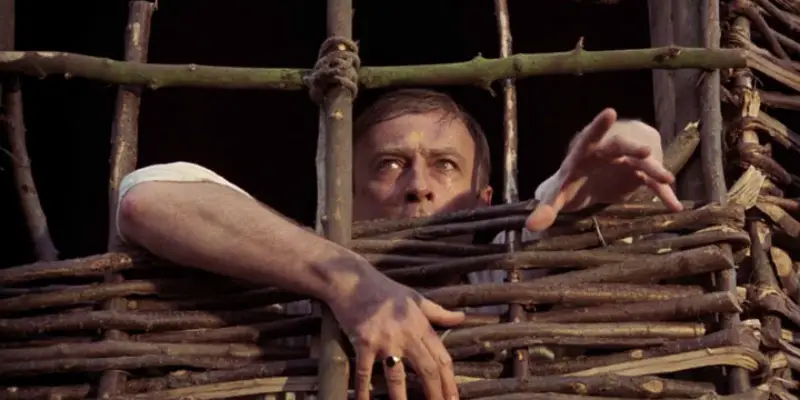
Has a soft spot for Hammer Horror films and is…
In the brilliant and insightful documentary A History of Horror, British writer and actor Mark Gatiss explores the horror genre throughout many countries. While discussing British horror cinema of the 1960’s, Gatiss uses the term ‘folk horror’ to describe a short but very curious subgenre. The films that make up this genre are unmistakably British and owe a large debt to the trail blazers of horror cinema in Britain: Hammer Horror Productions.
Hammer Horror
Horror in British cinema is synonymous with the Hammer Films from the late 1950’s through to the 1970’s. Hammer Productions took many of the 1930’s Universal horror monsters and updated them, the result was a brilliant success for the English company. Hammer broke new ground regarding gore and violence in the horror genre with the release of their first film; The Curse of Frankenstein. This production was shot in colour and thus became one of the first movies in colour to contain scenes with blood. The film was directed by Terrence Fisher and starred Peter Cushing and Christopher Lee, all three would become Hammer stalwarts for the next decade.
The film was a major box office triumph, although contemporary film critics were less than enthusiastic about the film’s gory scenes, which are extremely tame by today’s standards. The Curse Of Frankenstein was where the moniker “Hammer Horror” was born; a term that would become synonymous with gothic horror. Terrence Fisher’s next film for Hammer was the Horror Of Dracula (also known as Dracula), also starring both Lee and Cushing in the leading roles. Fisher’s take on the Bram Stoker novel is drenched in glorious Technicolor, contains an eerie atmosphere and has fabulous set designs. Like his previous effort, Dracula became a box office hit, with contemporary film critics praising its atmosphere. Hammer film productions would go on to dominate British cinema for the next decade.
By the mid 1960’s Hammer’s dominance in the horror genre began to wane somewhat. The curious and slightly strange subgenre of folk horror emerged within British cinema around the time Hammer’s fortunes began to change. Folk horror owes much of its tone and style to the influential Hammer films from the late 1950’s and early 1960’s. Recurring themes and motifs found in folk horror films are; a clash of faiths, the story taking place in the British countryside, and the practice of the occult. Before exploring some of these folk horror films, a look at contemporary British culture reveals how the genre came to cinema.
The Roots
The British music scene experienced a folk revival in the late 1960’s, with guitarists Roy Harper, Davey Graham and Bert Jansch exploring old British folk songs in their work. Folk bands such as Fairport Convention and Jethro Tull had some major success during this period. 1960’s Britain also witnessed the birth of Neopaganism, which became known as Wicca. Taking from many older religious traditions, Neopaganism grew very popular among the youth of the British Isles. With many young British people exploring the older beliefs with 1960’s enthusiasm.
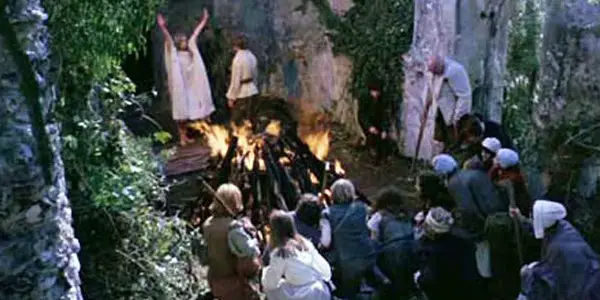
The work of occultist, poet and writer Aleister Crowley (1875-1947) found a new audience in this decade of self discovery. Led Zeppelin guitarist Jimmy Page was highly influenced by his work, and Crowley is one of the many famous people to feature on the front of The Beatles album Sgt Pepper’s Lonely Hearts Club Band. Occult themes also began to appear in the work of many British music artists. Black Sabbath explored occult themes in their work and also utilized a folk/occult theme for some of their artwork.
It was only a matter of time before many of these themes found their way into the national cinema. Cinema always tends to mirror the society which produces it. In their excellent book British Horror, Steve Chibnall and Julian Petley say the following on the folk horror genre: “The sub-genre found new life in its second phase, from 1966 to 1976, which saw the occult take its place more securely in British horror’s imaginary”. In 1968 the folk horror genre in Britain blasted into life with Michael Reeves’ brilliant nihilistic shocker Witchfinder General.
Witchfinder General
Set in 1645, during the English civil war (and based on real events), Reeves’ film details the murderous exploits of Matthew Hopkins (Vincent Price) and his assistant John Stearne (Robert Russell), throughout East Anglia. Hopkins claims to have been appointed “Witchfinder General” by both Parliament and God to rid England of witches. Both Hopkins and Stearne visit village after village and leave a bloody trail of destruction.
They beat and torture confessions out of innocent woman, who have been suspected of practicing witchcraft. Taking advantage of the social breakdown caused by the war, Hopkins uses the local people’s fears against them to exploit them for monetary gain, by offering his ‘services’. Fortunes take a turn for the worst for Hopkins when Stearne rapes a woman called Sara (Hilary Dwyer), whose partner Richard (Ian Ogilvy) is a Roundhead fighting in the war. After arriving home for a brief break, Richard learns of Sara’s rape and sets off to find both Stearne and Hopkins to get revenge.
The countryside is the backdrop for the atrocities committed by Hopkins, the villages which he and Stearne ravage are isolated, creating a very unpleasant atmosphere. The victims are cut off from the world by nature, giving the film its folk feel. Reeves also reinforces this folk tone through the use of colours in his scenes. As Richard is racing across the countryside, tracking down Hopkins, Reeves captures the countryside in a pale grey colour. The grey is then broken up by autumnal colours of yellow and red, these are seen throughout the trees in the landscape.
The clash of faiths in Witchfinder General are truly one-sided. Reeves doesn’t give much insight into whether these women accused of witchcraft are in fact guilt of such charges. The film shows Christianity at its most pious and details the brutal lengths its followers will go to protect it from so called evil forces. While it isn’t overtly presented, the clash of faiths is bubbling beneath the surface of the film.
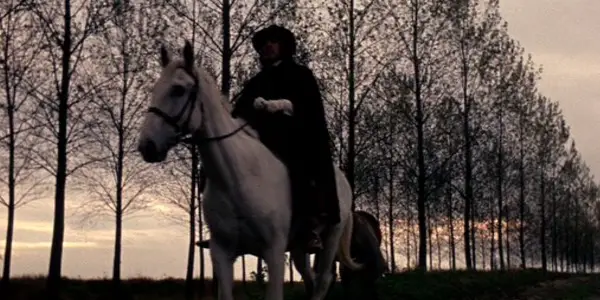
Witchfinder General courted much controversy upon it release, with many critics pointing out the very sadistic acts of violence that are portrayed on screen. The film was heavily cut by the British censor board, who were appalled at the film’s plot and its “exploitative violence”. While Reeves cooperated with the board, the further cuts they imposed on his work caused him to withdraw from the process.
Reeves died a few months later of a drug overdose at the age of twenty five, cutting short what was sure to be an excellent career as a film director. The film also contains one of Vincent Price’s greatest on-screen performance. An actor who was known to ‘ham’ and ‘camp’ up his performances, Price plays the role of Hopkins with such subtlety and menace that the actor in later years acknowledged that is was one of his best films.
The Blood on Satan’s Claw
While ploughing a field, Ralph Gower (Barry Andrews) discovers a strange skull in the earth and decides to take it to the local judge (Patrick Wymark). The judge dismisses Ralph’s fears about the skull and a short time later the skull disappears. Strange events begin to besiege the small rural village, with most of its young children acting in a strange way. It then becomes apparent that the local children have become possessed by a demonic entity, leaving Ralph to stop the evil forces.
Director Piers Haggard’s The Blood on Satan’s Claw follows many of the themes that were explored in Witchfinder General. The village which is subjected to this demonic possession is rural and cut off from the world by nature. To appease their new God, the children of the village take to the surrounding woods to carry out their occult duties. This helps set an earthly tone to the film, with the scenes illuminated by the yellow and reds of the surrounding trees.
The evil in The Blood on Satan’s Claw comes from within the earth. Ralph finds the skull while ploughing, and unleashes its evil power. This can be viewed that the skull is inherited evil (coming from within the earth) and this helps feed back into the folk theme of the film.
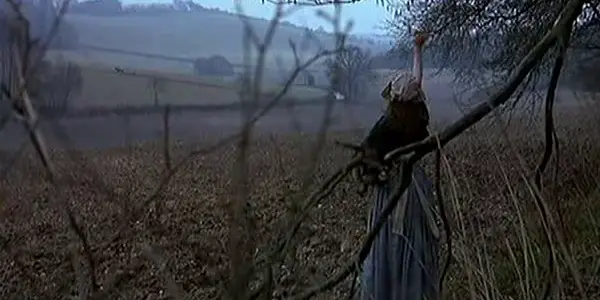
The clash of the occult and Christianity is very clear in Haggard’s film. As the children fall under Satan’s spell a coven begins to form. At the head of this coven is the teenager Angel Blake (Linda Hayden) who confronts the Reverend Fallowfield (Anthony Ainley). When she confronts Fallowfield, their faiths clash with a classic good versus evil scene. Blake then attempts to sexually seduce Fallowfield to turn him towards the dark side. The judge is also seen as a embodiment of God and comes into conflict with the satanic coven
The Blood on Satan’s Claw is a fascinating mess of a film, stemming from the fact the plot was originally supposed to be three different stories that were just linked by the small village. Ultimately the script was rewritten and the three stories were combined into one. These cuts to the plot has led to the film feeling disjointed, with some of its subplots not making much sense. While it is certainly flawed, Haggard’s film is a prime example of folk horror at work and is one of the many reasons that the film has gained a cult following over the decades.
The Wicker Man
Sgt Howie (Edward Woodward) travels to a remote Scottish island called Summerisle to investigate the disappearance of young girl called Rowan Morrison (Gerry Cowper). As he begins his investigation he is struck at how suspicious the locals are of him and how they refuse to help with the investigation. Howie soon discovers that the local inhabitants of the island are still worshipping old Celtic Gods and are immersed in pagan practises. A devout Christian, this horrifies Howie, who now becomes even more concerned about the mystery of Rowan’s disappearance.
Unlike the other two films mentioned above, The Wicker Man has a contemporary setting, the opening scene is of Sgt Howie flying a small plane to the island. This changes as Howie ventures further into the island and the local beliefs become more clear. This almost transports the character back in time. Film critic Robert Shail, in the book Seventies British Film, writes how the island is almost like a parallel world “The island is located within a dream like ‘folk-chronotrope’ or time/space parallel world”. This helps the film present its folk feel, the island is cut off by nature from the modern world.
Director Robin Hardy lets the clash of faiths become the horror in the film. Howie’s arrival on the island mirrors that of a Christian missionary arriving to convert the pagans. Hardy at first displays Howie’s shock that such rituals could still be happening in the modern day. Shock then turns to anger as Howie lashes out at a teacher who is teaching her students about the Maypole and phallic symbols. Howie rages at the school children for not knowing who Jesus Christ was.
Hardy then turns the film slightly on its head with the introduction of the character Lord Summerisle (Christopher Lee), who is the figurehead of this religion. Summerilse is presented to us as a jubilant character who is full of life, although he is essentially flawed, this becomes more apparent as the film goes on. This is at odds with Howie’s character, who comes across as authoritarian and feels morally superior to the locals. Although this view does change by the last act in the film. These two characters are a perfect example of the clash of faiths that is present in the folk horror genre.
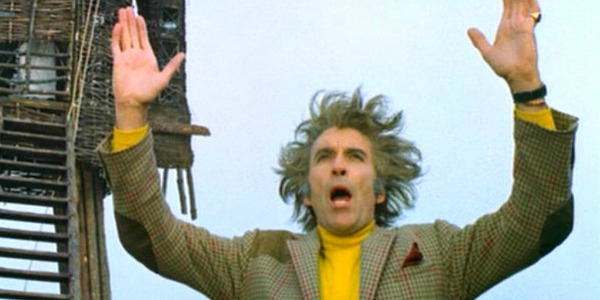
Music is another factor that Hardy incorporates to achieve a folky tone to the film. Folk music takes centre stage, with many of the characters performing songs throughout the film. The Wicker Man has been described as a “pagan musical” by film critic Leon Hunt. Many of the songs that the characters sing are infused with sexually permissive lyrics. The final scene of the film plays out with the characters singing the old folk song Summer Is A -Cummin to a huge burning effigy of a wicker man on the edge of a remote cliff.
Robin Hardy’s film is the pinnacle of the folk horror genre and just like Reeves and Haggard’s efforts it has become a cult classic of British horror cinema. After its release the film faded away into obscurity. Until Cinefantastique magazine released a commemorative issue in 1977 proclaiming the film to be “the Citizen Kane of horror movies”. This in turn led to a re-evaluation of the film, with many prominent critics championing it as one of Britain’s finest films. Since then Hardy’s film has gone from strength to strength and continues to inspire many young horror directors.
The Legacy Of Folk Horror
In recent years the genre has seen a mini revival in British cinema. Ben Wheatley, one of Britain’s finest young directors, has been highly influenced by the folk horror genre. His breakout film Kill List blends elements of the gangster genre with folk horror motifs, such as occult practices and the British countryside. The result is a nail-biting thriller, with the final act taking the form of pure folk horror.
Wheatley’s next film A Field in England, explores the folk horror motifs in full depth. Set during the English civil war, Wheatley’s film tells the story of three men fleeing the war and falling under the spell of an alchemist. Elements of black magic, occult imagery and a clash of faiths feature heavily throughout the film. The film takes place in a field (hence the name), with the characters experimenting with magic mushrooms; which in turn gives the setting an eerie feeling. Wheatley’s work is a prime example of the folk horror genre’s influence.
The influence of the genre has also spread to America as seen with Robert Eggers’ directorial début The Witch. Although the film is American made and takes place there, the atmosphere is ultimately British folk horror. It tells the story of a Puritan family who is excommunicated from a small New England settlement in the 17th century. Settling just outside a large forest, the family begin to have supernatural experiences. It then becomes clear that something evil is watching them from the forest and a test of their faith begins
Eggers explores the familiar tropes of the genre with this story. The family are isolated by nature and thus cut off from the world. As the film progress it becomes clear that their faith is under attack, this in turn leads the family to turn on itself. Eggers’ The Witch makes for some uncomfortable viewing though it has been met with critical praise and has become something of a sleeper hit. The film shows that the small subgenre of folk horror has had an impact on the horror genre, and continues to enthral and charm audiences to this day.
Conclusion
The folk horror genre has become a footnote in the history of British cinema and a curious one at that. As one can see with The Wicker Man, most of these films were ignored upon release and slipped into obscurity. As critical appraisal for the films became more widespread, critics began to champion them as a fine example of British horror. The genre is certainly very British and this is down to the iconography. The British countryside is the main star of the genre, conjuring up beautiful scenery in eerie scenes in many of the films.
The genre has achieved cult status in the past few decades and as one can see it has also has had some influence on young film makers. The often bizarre, camp and nihilistic tone of folk horror is the reason for its cult appeal. Cinematography also plays a vital role in the genre’s appeal. The opening scene of the Witchfinder General captures the countryside beautifully, only for this tranquil moment to be interrupted by a scream. This is why the genre has become relevant again, because it allows a director to present beauty and horror in equal measures.
Can you name any other films that fit into the folk horror genre? Comment below!
Does content like this matter to you?
Become a Member and support film journalism. Unlock access to all of Film Inquiry`s great articles. Join a community of like-minded readers who are passionate about cinema - get access to our private members Network, give back to independent filmmakers, and more.
Has a soft spot for Hammer Horror films and is constantly looking to further his knowledge of cinema.













